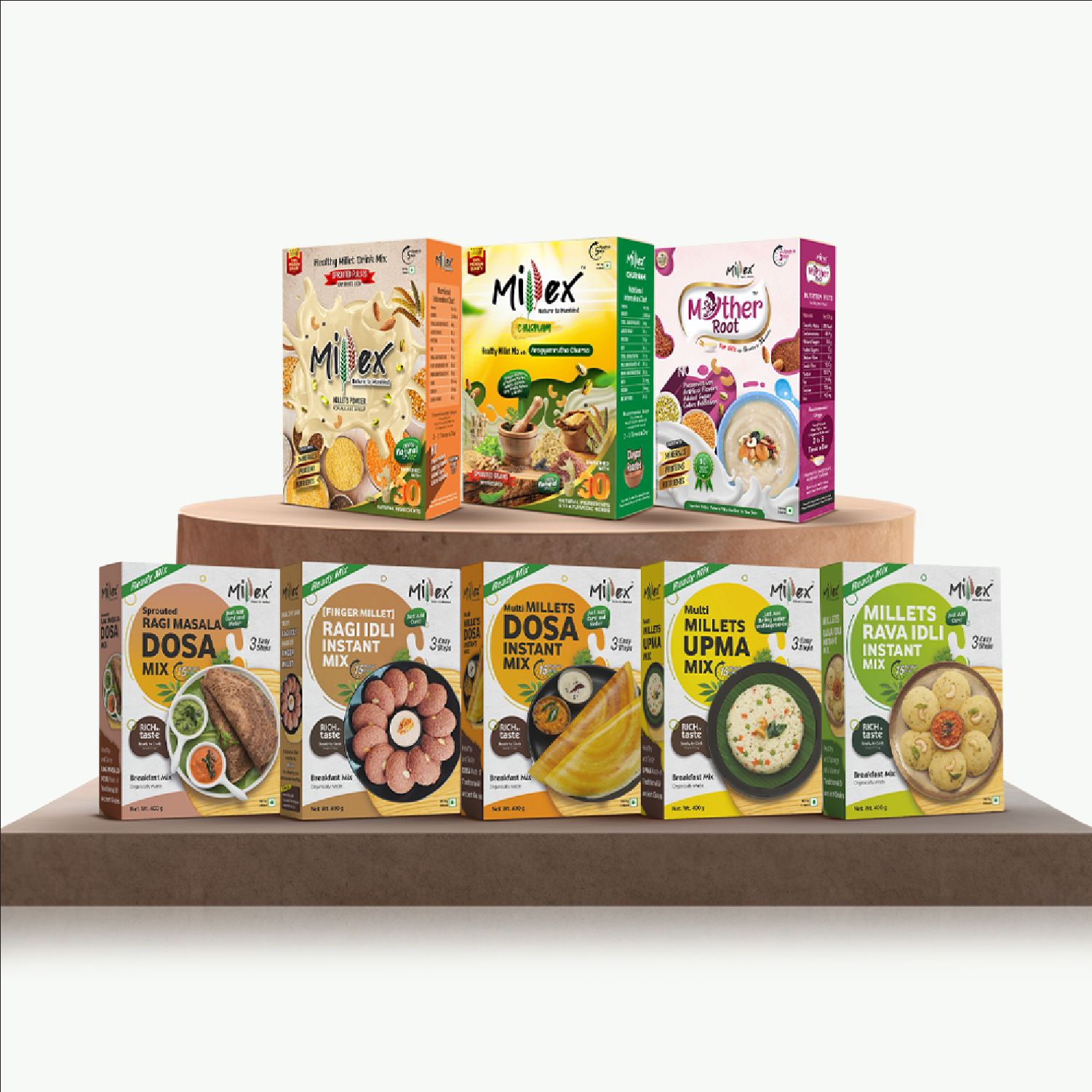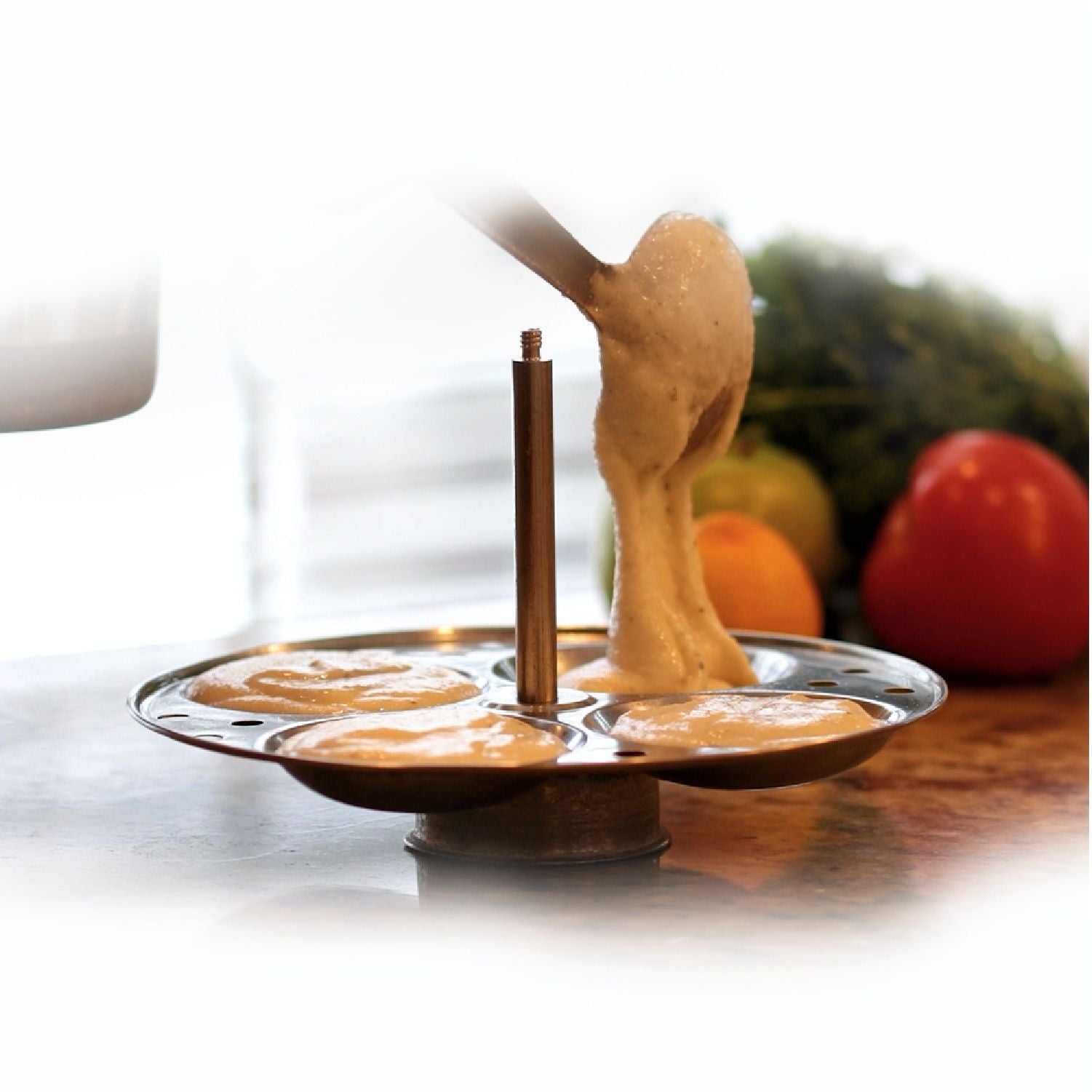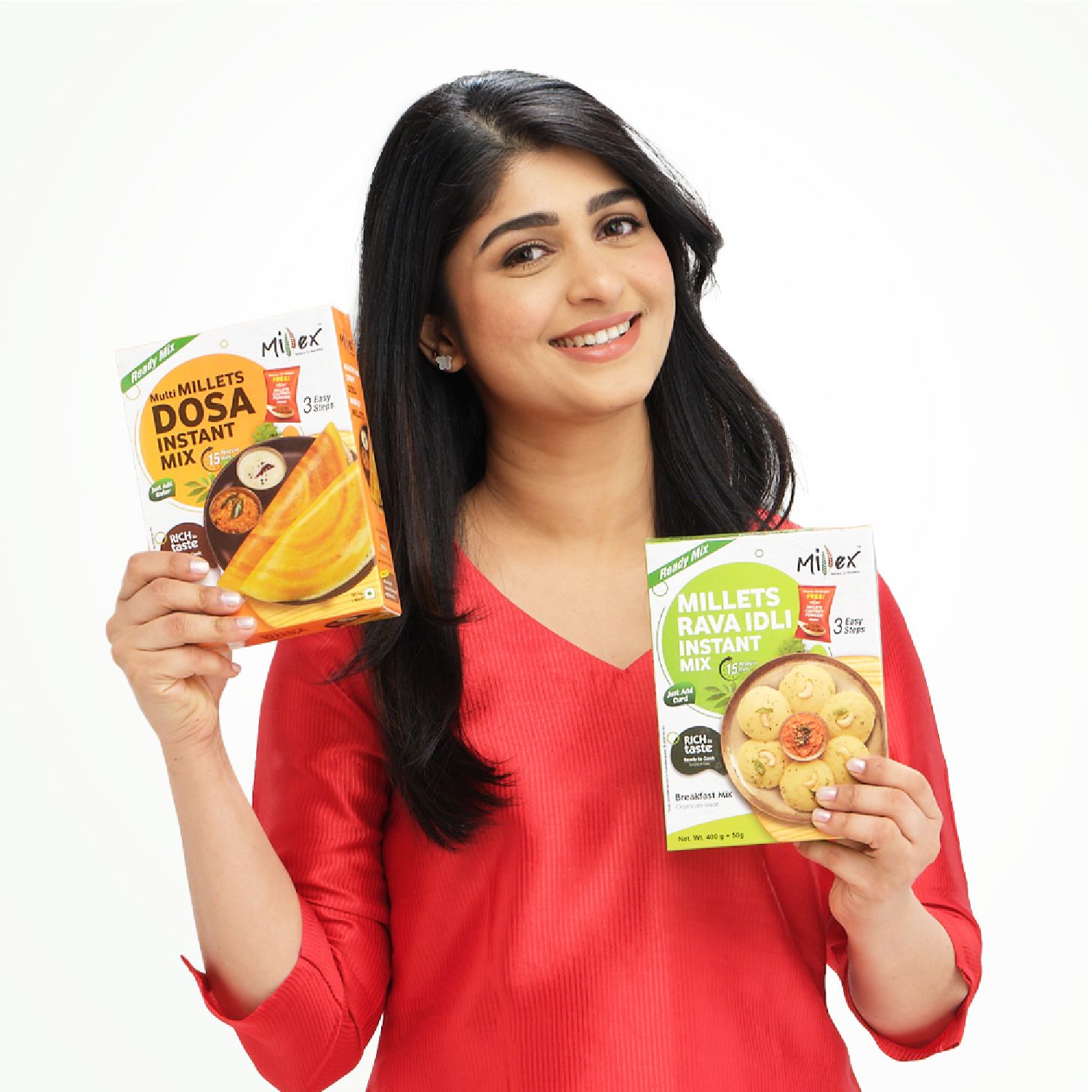Diabetes is considered as a common health problem that affects millions of people worldwide. The International Diabetes Federation states that it affects about 463 million individuals aged 20 to 79, with projections of a rise to 700 million by 2045. Managing diabetes requires a lifelong commitment to a healthy diet, regular physical activity, and prescribed medication.
Are you a person who has tried all the familiar diets and none has controlled your diabetes? If so, here comes the millet as a lifesaver! Of course, yes, millets are rich in minerals and fiber and have a low glycemic index, making them an ideal food for people with diabetes.
In our busy lives, finding time to incorporate a variety of millets into our daily routines can be challenging. Fortunately, millet mixes provide a convenient solution. Introducing Millex Millet Health Mix, offering a convenient and nutritious option for managing diabetes.
Millex Millets benefits for diabetes by offering three types of millets-based health mixes, including Ayurvedic herbs, cereals, and nuts. Also, it promotes a healthier lifestyle. Incorporate Millex Millet health mix into your daily diet and experience the benefits firsthand.
5 Best Millets for Diabetes
Yes! Adding millet to your daily diet will bring numerous health benefits. Do you know which millets will particularly help control blood glucose levels? Here are 5 familiar millets that help control blood sugar levels.
- Foxtail millet (Korra/Navane)
- Barnyard millet (Sanwa)
- Finger millet (ragi)
- Pearl millet (bajra)
- Little millet (sama)
Let's see every millet in detail:
- Foxtail Millet
Foxtail millet, also known as Kakum or Kangni, has earned a reputation as a miracle millet due to its numerous health advantages. It is widely appreciated worldwide and stands out for its nutrient-rich composition, which includes antioxidants, vitamins, and minerals.
Its high fiber content helps to stabilize blood sugar levels. Studies show it can lower blood sugar levels when used instead of rice or wheat.
This versatile grain has a multitude of culinary uses, including warm upma, delicious pulao, and healthy porridge, making it an excellent choice for diabetic-friendly cooking.
With its adaptability and nutritional value, foxtail millet is a healthy addition to a balanced diet that promotes general well-being.
- Barnyard Millet
Barnyard millet, commonly called "Sanwa" or "Jhangora," is a healthy grain known for its nutty flavor. It is high in protein and dietary fiber and provides several health benefits.
Barnyard millet's high fiber content helps to regulate blood sugar levels and promotes healthy digestion. Its low carbohydrate content and moderate digestion rate contribute to its low glycemic index. This will control the blood sugar levels effectively.
Furthermore, barnyard millet contains important elements such as magnesium and phosphorus, which are very important for people with diabetes.
Cooked barnyard millet can be used in various cuisines, such as khichdi, dosa, or porridge, to create a healthful and balanced meal alternative that effectively helps diabetes treatment efforts.
- Finger Millet
Finger millet, often called ragi, is a nutrient-dense and versatile grain noted for its many health advantages. Finger millet contains more calcium and potassium than other millets, grains, and cereals, making it an excellent source of important minerals and amino acids.
According to research, Ragi's high fiber content, minerals, and amino acids all help to improve blood sugar and cholesterol levels.
Its gluten-free nature, high fiber content, and polyphenol content are especially advantageous to diabetic people. Ragi flour's low glycemic index makes it a diabetic-friendly rotis, millet dosas, and oatmeal ingredient.
Furthermore, finger millet polyphenols are powerful antioxidants and anti-diabetic agents, which help to maintain blood sugar levels effectively.
- Pearl Millet
Pearl millet, or bajra, is a powerhouse grain renowned for enhancing insulin sensitivity and reducing triglyceride levels. This millet is particularly beneficial for individuals managing diabetes.
Rich in dietary fiber, pearl millet prevents diabetes and contributes to sustained energy levels by facilitating slow digestion and gradual glucose release into the bloodstream.
Its low glycemic index and high fiber content make pearl millet flour an excellent choice for regulating blood sugar levels over an extended period.
Incorporating pearl millet flour in dishes like rotis, flatbreads, or porridge supports overall health and diabetes management efforts. When incorporated into a balanced diet, it offers numerous health benefits.
- Little Millet
Little millet is also known as Samai or Kutki. It is considered as nutrient-dense grain with numerous health benefits.
Beyond its rich, complex carbohydrates, fiber, and protein content, it also contains significant amounts of iron and B vitamins.
Little millet's moderate glycemic index distinguishes it, facilitating effective blood sugar control. Its slow digestion rate ensures a gradual release of glucose into the bloodstream, contributing to sustained blood sugar levels in individuals with diabetes.
This versatile grain finds its way into various culinary creations, from flavorful pulao to comforting porridge. In addition to its blood sugar-regulating properties, little millet shines as an excellent source of essential nutrients, including magnesium and B vitamins, further enhancing its appeal as a staple in a balanced diet.
How Millets Benefits Diabetes?
Managing diabetes requires a complex approach, including food choices, physical activity, and medication. Among the many nutritional options available, millets are a diverse and advantageous choice for people with diabetes. Here are a few ways millets can help with diabetes management:
- Lowering Blood Sugar Levels
One of the primary advantages of including millets in a diabetic diet is their low glycemic index. The glycemic index indicates how quickly carbohydrates in food elevate blood sugar levels.
Low-GI foods, such as millet, digest and absorb slowly, gradually causing blood sugar levels to rise.
This helps to reduce blood sugar spikes, which are critical for diabetics to maintain consistent glucose levels throughout the day.
- Rich in Fiber
Millets are an excellent source of dietary fiber, which is beneficial for individuals with diabetes. Fiber plays a crucial role in slowing down the digestion and absorption of carbohydrates, thereby preventing rapid increases in blood sugar levels after meals.
Additionally, fiber helps promote satiety and can aid in weight management, which is important for controlling diabetes.
- Weight Management Support
Obesity and overweight are significant risk factors for the development and progression of type 2 diabetes.
Millets are low in calories and high in fiber, making them an ideal choice for individuals with diabetes who are looking to manage their weight.
A fiber-rich diet can help individuals feel full for longer periods, reduce appetite, and prevent overeating, which are important for weight control.
- Provides Essential Nutrients
Millets are low in glycemic index, high in fiber, and rich in essential nutrients such as vitamins, minerals, and antioxidants.
For instance, millets are particularly rich in magnesium, which plays a crucial role in glucose metabolism and insulin action, thus helping to regulate blood sugar levels.
Additionally, millets contain iron, phosphorus, and zinc, which are essential for overall health and well-being.
- Gluten-Free
For individuals with celiac disease or gluten intolerance, finding gluten-free alternatives is essential.
Millets are naturally gluten-free, making them a safe and nutritious option for individuals with these conditions.
By replacing gluten-containing grains like wheat, and barley with millets, individuals with celiac disease or gluten intolerance can still enjoy a varied and balanced diet without compromising their health.
- Lowers Cholesterol
The soluble fibers found in millet can potentially lower cholesterol levels in the body. Additionally, the proteins present in millet contribute to reducing the triglyceride count.
Research indicates that individuals who include millets in their diet maintain optimal adiponectin hormone levels.
This hormone plays a crucial role in fat oxidation, resulting in elevated levels of 'good' cholesterol and promoting improved heart function.
- Heart Health Enhancement
You know that individuals with diabetes may have the increased risk of cardiovascular diseases. The antioxidants present in millets help reduce inflammation and protect against heart disease.
Furthermore, millets are low in saturated fat and cholesterol, making them a heart-healthy choice for individuals with diabetes.
By adding millets for diabetes, people can enjoy delicious and nutritious meals while effectively managing their condition and improving their overall health and well-being.
The Bottom Line
Millets are powerful partners in the fight against diabetes due to their nutritious content and adaptability. Each variety of millet offers unique advantages, with ragi being rich in fiber and foxtail millet providing sustained energy release. Imagine if you have all millets packed in a single, convenient mix. Millex Millet Health Mix does just that, combining various millets with Ayurvedic herbs, cereals, and nuts. Buy millet mix powder online from Millex, which offers a holistic approach to diabetes management, providing essential nutrients and promoting overall well-being. Unlike many health mixes today, Millex stands out for its distinctiveness and unmatched composition.
which 5 millets is good for diabetes?
Millets are a great choice for people with diabetes due to their low glycemic index and high fiber content, helping regulate blood sugar levels. Five millets particularly beneficial for diabetes management include:
- Foxtail Millet (Korra/Navane): Helps lower blood sugar spikes with its slow-digesting carbs.
- Barnyard Millet (Sanwa): Rich in fiber, it supports blood sugar control.
- Finger Millet (Ragi): High in calcium and helps manage glucose levels.
- Pearl Millet (Bajra): Known for improving insulin sensitivity.
- Little Millet (Sama): Aids in steady glucose absorption, preventing sudden spikes.
Incorporating these millets into a diabetic-friendly diet can improve health and manage blood sugar.
which millet is best for diabetics?






